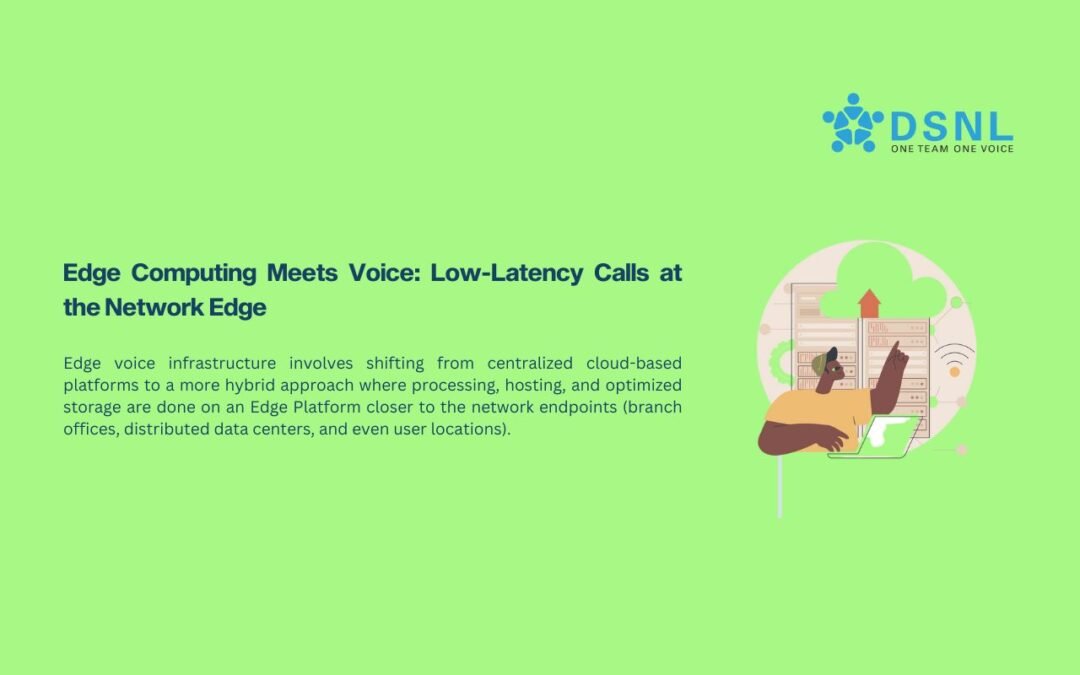Edge voice infrastructure involves shifting from centralized cloud-based platforms to a more hybrid approach where processing, hosting, and optimized storage are done on an Edge Platform closer to the network endpoints (branch offices, distributed data centers, and even user locations). Some call traffic is now maintained and terminated at the Edge itself, often only forwarding call signals through to the core data center or cloud.
Latency and Efficiency
Real-time voice communication at the network edge offers significant advantages over centralized or even traditional on-premise data center infrastructure. The reasons why edge computing helps in significantly reducing latency (or the time delay between an action/input and its response) in business voice communications.
Call placement becomes faster due to reduced call setup times, while jitter, packet loss, and resulting in a clearer and more intelligible conversation. Lower latencies, in turn, enable faster real-time voice processing at the Edge (as mentioned in the section below), and thus faster response times to queries, requests, etc.
Decentralizing Enterprise Voice Networks
Edge deployments also allow businesses to decentralize their entire voice infrastructure, with all smart routing and platform logic implemented not only at the core or headquarters office, but on an edge platform close to the user, device, or branch office.
PBX systems and applications such as call transfer, automated attendants, and gateways, as well as the smarter routing, queueing, and distribution logic, are now hosted on an Edge Platform but with complete command-and-control from the centralized data center.
Remote Branch Resilience
Enterprise edge deployments are inherently more redundant and recoverable than traditional cloud or virtual systems. For instance, a disruption of the internet connection (for any reason) affecting the core servers or even the central call control cloud platform may potentially disconnect remote branch or mobile users from the rest of the enterprise. However, in an edge platform, local calls can still be routed, maintained, and even transcoded to different destinations through the core network until the disruption is fixed.
Real-Time Voice Processing
Intelligence is the final frontier in voice-over-edge computing for enterprises. Building on real-time voice processing needs across the industry, with low-latency edge deployment, voice processing can be optimized for real-time response. The benefits are seen not only in making and receiving calls but in real-time voice intelligence and analytical services and edge analytics itself.
For instance, real-time voice processing allows support supervisors to monitor the quality of service for individual calls on an operational dashboard as they happen, run automated analytics on audio for keywords or other compliance purposes, and be instantly alerted to intervene or pass off to agents, as well as support virtual agents and IVR systems themselves that can now react instantaneously without perceiving delay.
Use Cases Accelerating Enterprise Adoption of Edge Voice
Edge voice adoption today is increasingly driven by a combination of typical use cases, contact center innovations, as well as highly specific use cases, and even enabling completely new real-time business workflows or communication-first processes.
Contact Centers
Leading global contact centers have always been frontrunners of innovations in cloud and hosted VoIP telephony services, including now edge-based voice processing for centers. Contact centers, call centers, or support hubs typically serve as centralized call-processing points for organizations.
The goal for most enterprises is to be able to quickly route the call to the agent best qualified or geographically nearest to the caller, without requiring repeated transfers, which delay service and erode user experience. In a global call center environment with office locations across geographies or distributed teams (even extending into remote workforces), this introduces not just geographical latency challenges but availability, scalability, and network issues.
Industrial IoT
The Internet of Things in manufacturing and automation presents another major opportunity for real-time, low-latency voice on edge infrastructure. Connected devices, machinery, and embedded automation play a crucial role not just in manufacturing and industrial outputs but also in machine control and failover, network health monitoring, production planning and tracking, worker safety, and more.
Conclusion
Edge allows for not just low latency but near-real-time voice communications for on-demand or automated processing and voice analytics. Voice communication is not a new concept in the enterprise, but the need for real-time speed and reliability is putting stress on legacy as well as cloud-only or hosted telephony platforms.
Contact our Edge Voice Solution Experts today! We have the most reliable and innovative partner to help you take full advantage of the low-latency, real-time Voice-over-Edge Services.

